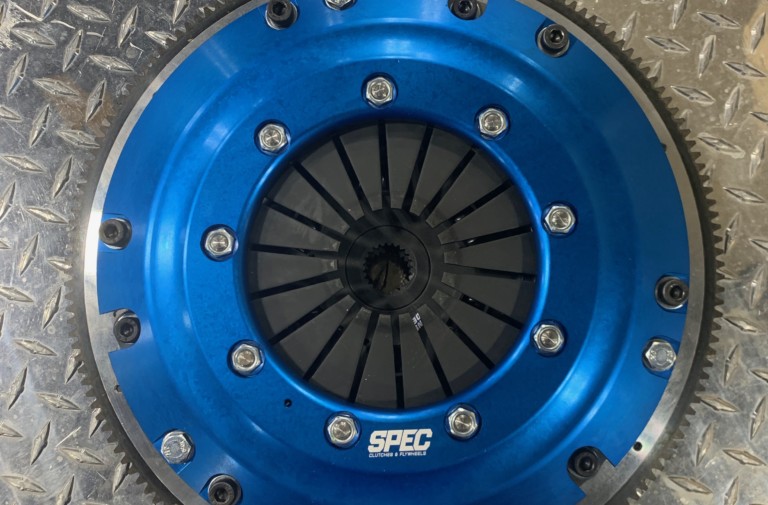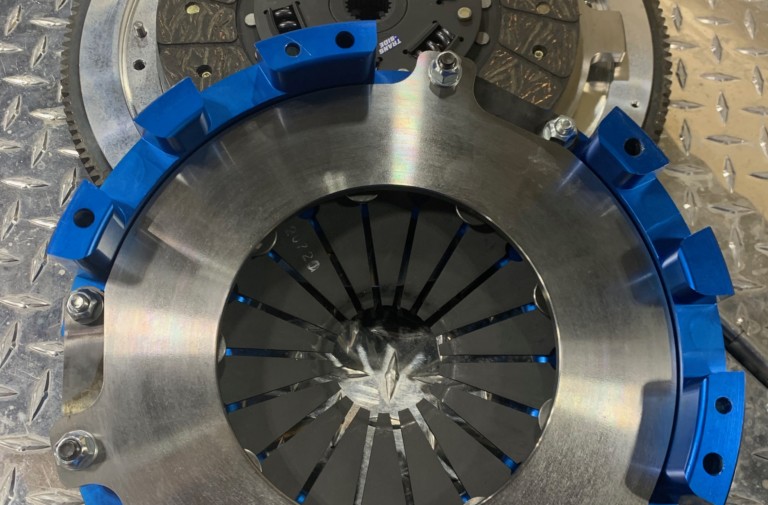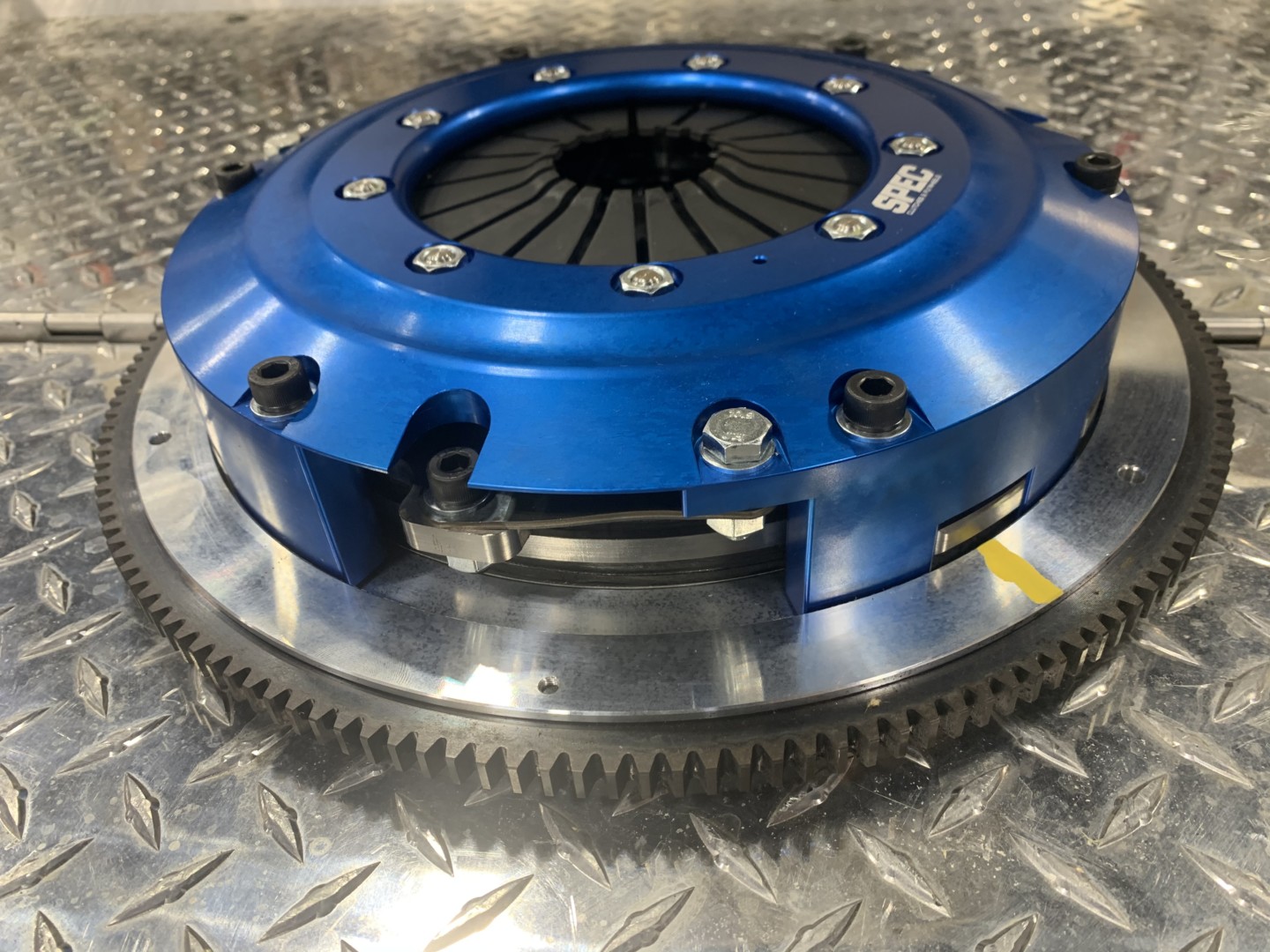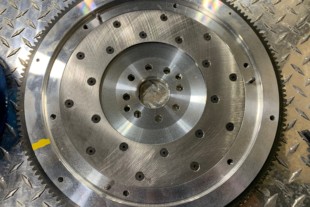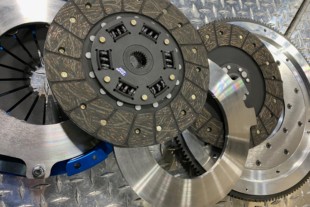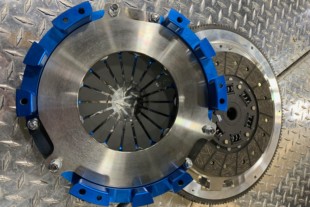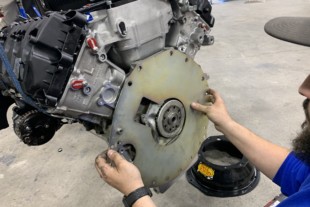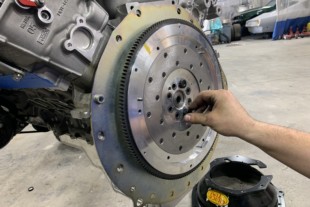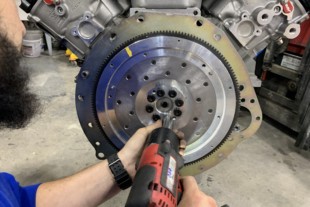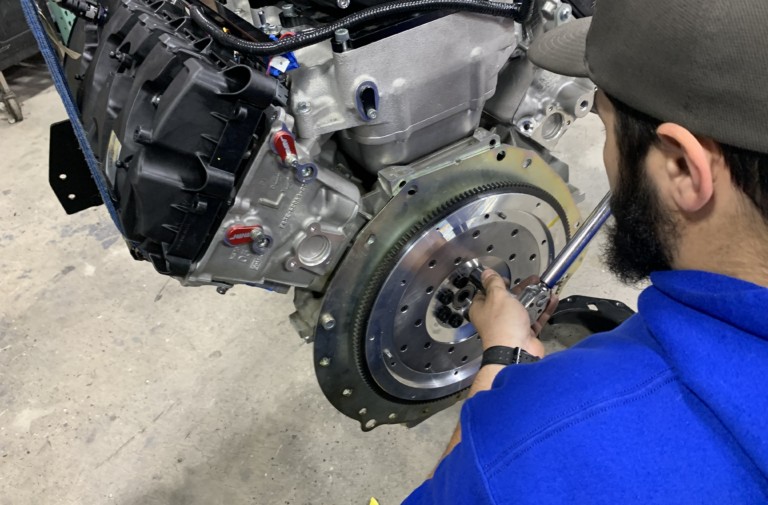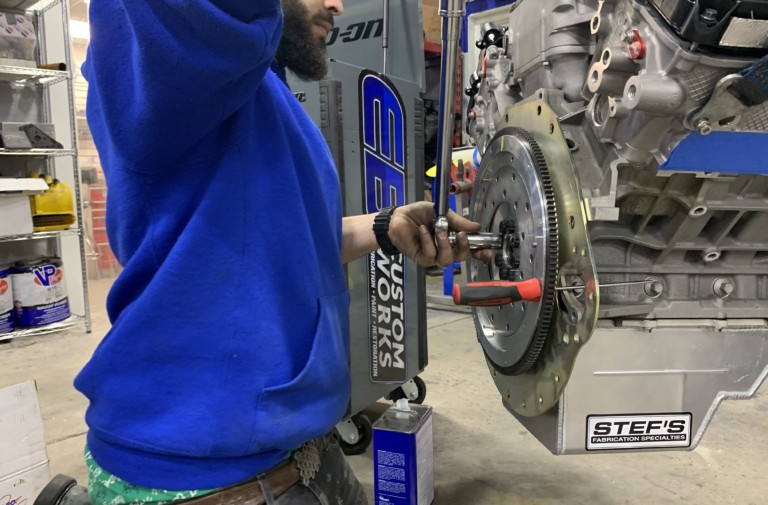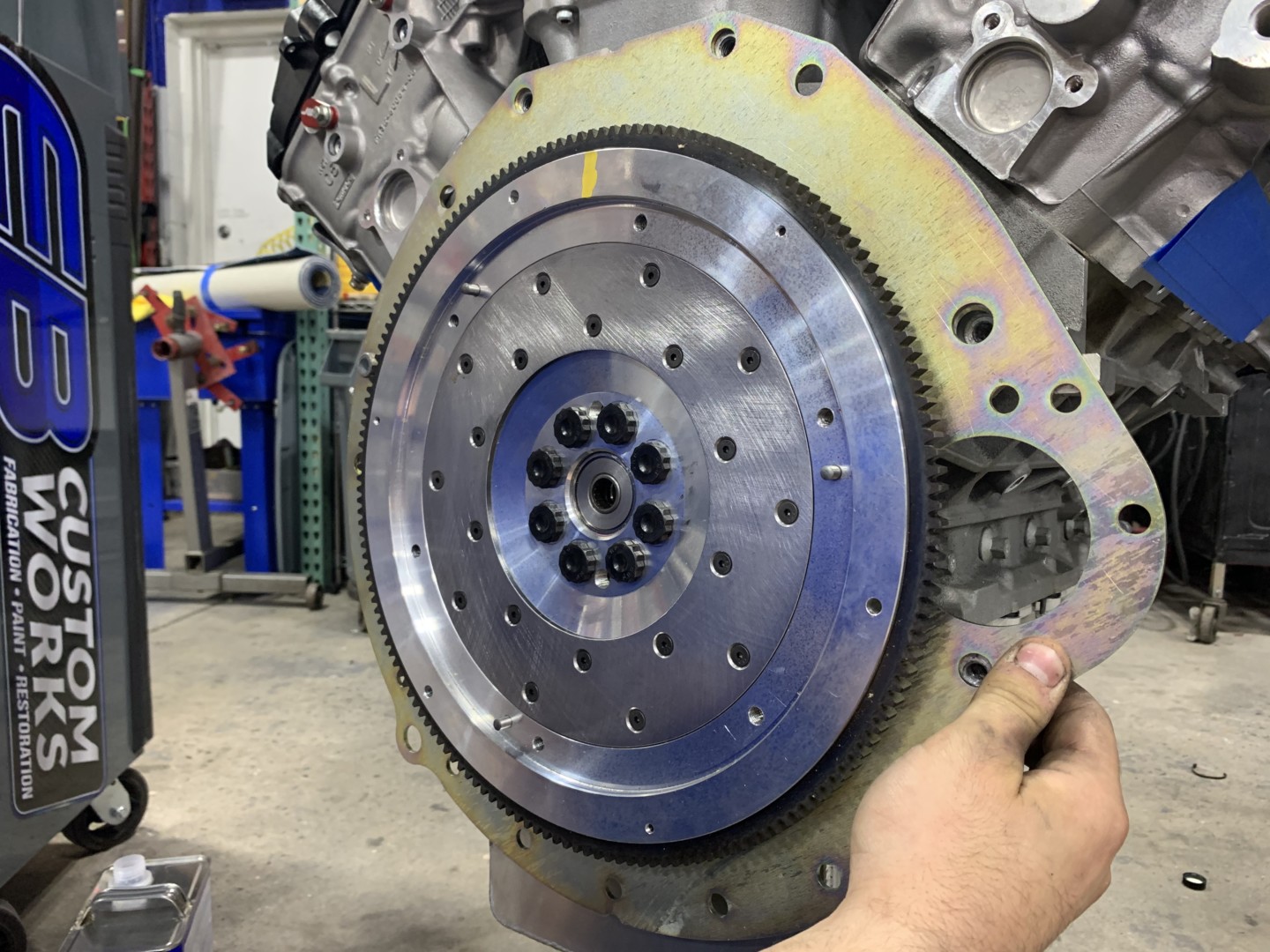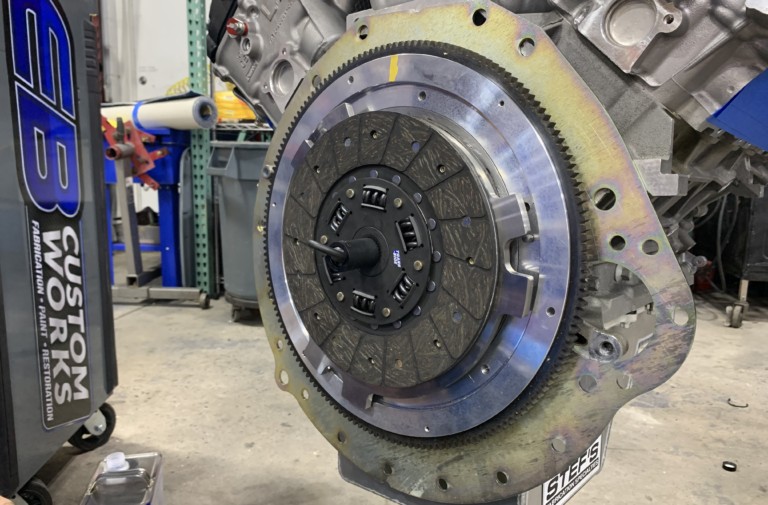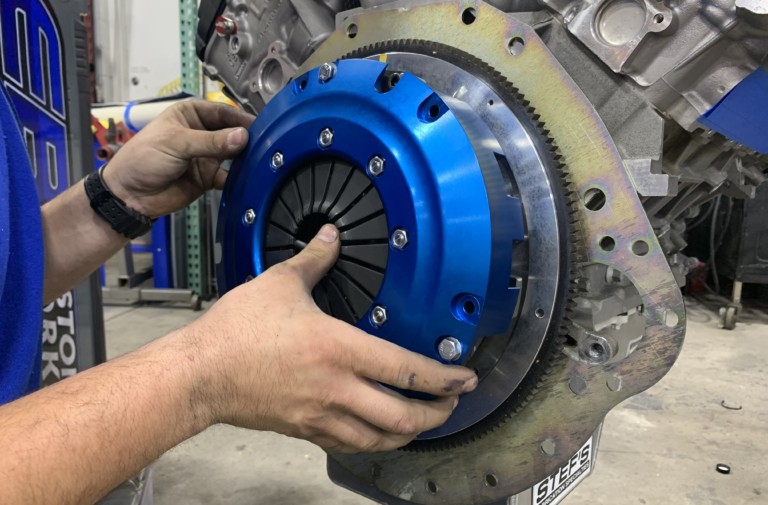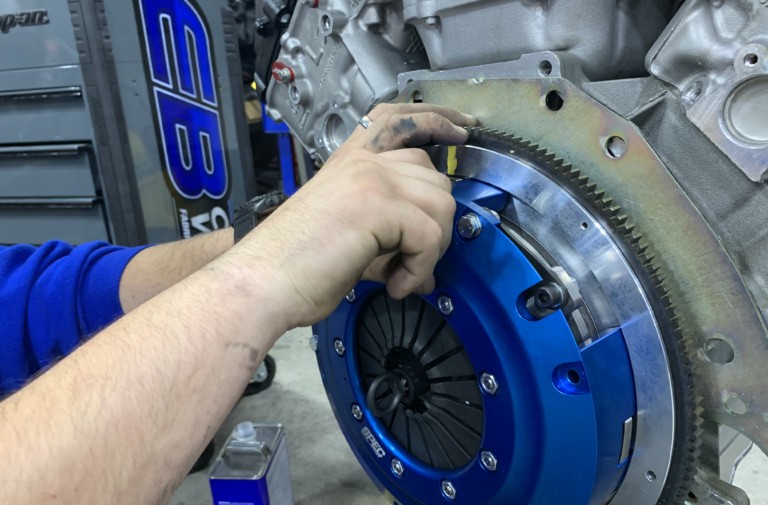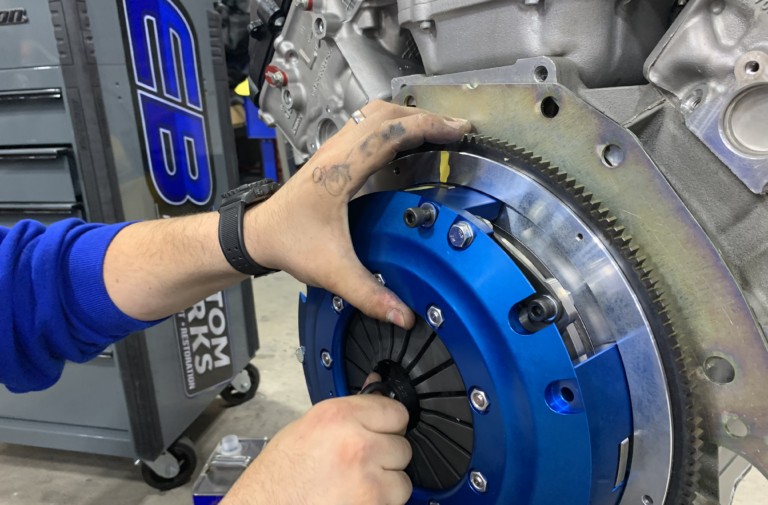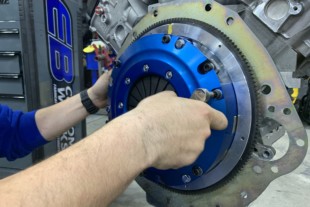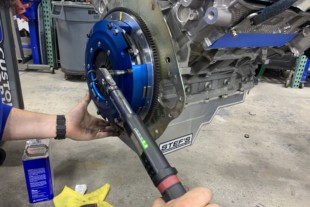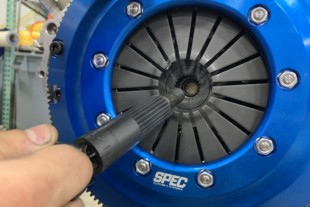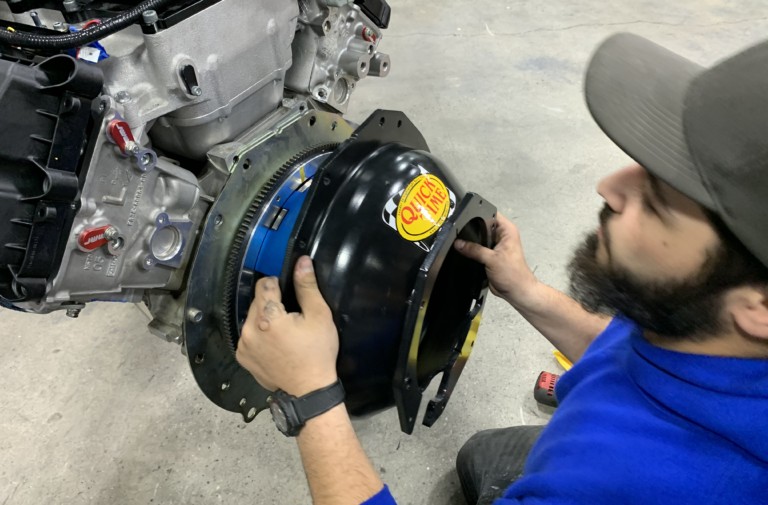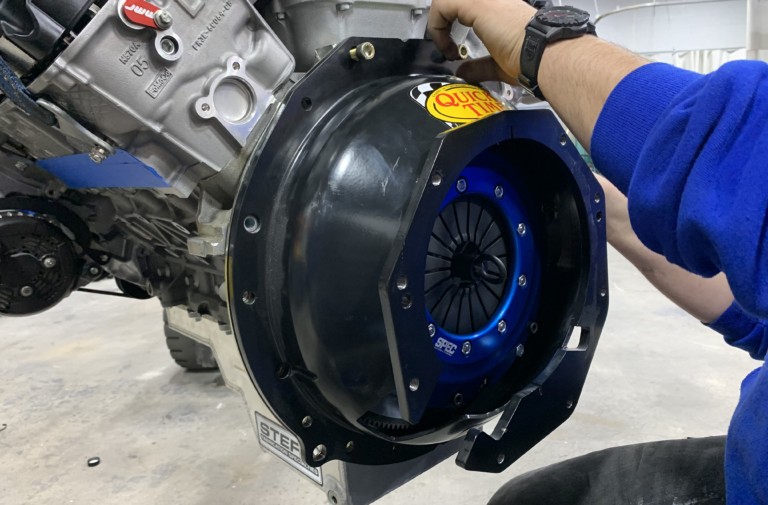Wait! Don’t click away! Here at Ford Muscle, we’re all about Ford performance, and sometimes, it doesn’t look exactly as you would expect it to look. Introducing Project MoFo, being built by EB Custom Works out of Long Island, New York (Ronkonkoma to be exact). This 1968 Plymouth Barracuda started from humble Mopar beginnings, but it’s on its way to becoming Ford powered. Bear with us here — we think you’ll like it.
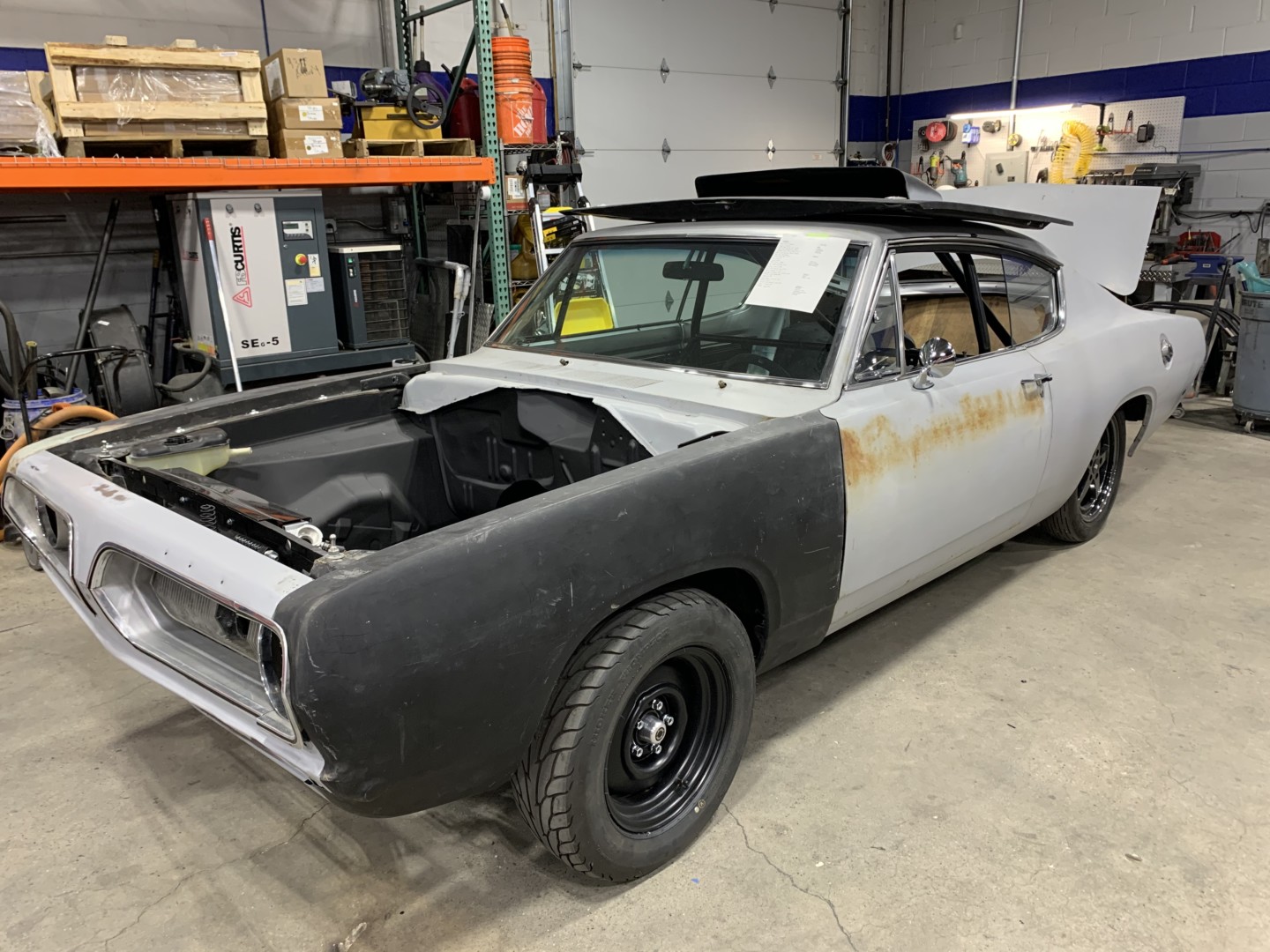
EB Custom Works’ Project MoFo is a 1968 Barracuda that will soon be powered by a Whipple-supercharged Coyote engine.
The street car is being equipped with all-Ford components, including a Coyote with GT350 bottom end and 2015 GT cylinder heads as well as a Comp Cams .570-inch lift camshaft with lockouts. The engine is topped with a Whipple 2.9L Gen 3 race-ported supercharger. The powerplant is backed by a D&D Performance Tremec T56 transmission with a Ford 9-inch rear with Positraction differential and 4.10 gears. A FAST XFI ECU system will be used for engine management and the ‘Cuda will run on 93-octane pump gas.
The combination is expected to make in the ballpark of 800 horsepower with a mild tune, and will terrorize the streets of New York, with the odd trip to the drag strip thrown in. Because of this, we knew we needed a clutch that could handle all that owner Eric Bardekoff will be throwing at it. We reached out to our friends at SPEC Clutch and they pointed us in the right direction.
After giving SPEC’s Shelly Norton a quick rundown on the proposed build, she offered two great options: for the best drivability, she instructed us to use the SPEC SS-Trim Super Twin Carbon/Kevlar Clutch Kit (PN SF50SST-O-2) with a 947 lb-ft of torque capacity, or for a slightly quicker but still streetable engagement, she recommended the SF50SST-2, which holds 1,214 lb-ft of torque. We weighed our options and decided on the former to keep the ‘Cuda as comfortable as possible.
“Aside from the engine plates and the solid transmission mounts, the big race cams, it’s going to have A/C, heat, audio system, and mufflers — basically a street car. So everything needs to function like a stock-modern car. I don’t want a light switch clutch, on and off. I need a little slip and a clutch that feels like stock. As fun as it sounds to be spinning down the road in sixth gear sideways, it’s not really a street-friendly feeling. This is why we opted for a twin disc,“ said Bardekoff.
Clutch SPECs (Get it?)
First things first, choosing a clutch can be a tough process if you’re not dealing with the right people. SPEC Clutch is based out of Bessemer, Alabama, and is owned by David and Shelly Norton. The Nortons have been a staple in the Ford performance world for a long time, with David’s roots in NMRA drag racing. We knew it would be easy to explain our project and what we wanted to achieve, and that we would be able to trust their guidance.
Our new SPEC SS-Trim Super Twin Carbon/Kevlar Clutch Kit, like all of SPEC’s clutches, was designed, hand-built, and tested in the USA. The Super Twin specifically is made for street and track use on applications with extreme horsepower and torque (between 700 and 1,500 lb-ft). SPEC tells us that Super Twin clutches offer near-stock drivability paired with a tremendous life expectancy. No shimming or setup is required for the bolt-in installation, and operation is said to be maintenance-free. The clutch features an aluminum flywheel constructed from high-quality steel and aluminum. These are the only flywheels on the market that are manufactured to a .001 machine tolerance. This means that a flat seating surface is guaranteed and allows for smooth rotational qualities that enable perfect balance and extended engine life.
SPEC offers several pressure plate options, including lightweight, aluminum, and Super Clamp. Our clutch came with a Super Clamp pressure plate, which is designed for extreme clamp loads. And we couldn’t move on from talking about the pressure plate without mentioning the clutch housing’s stunning blue powdercoating. Not only does it look like a piece of art, but this ensures that the clutch won’t rust over time.
A block plate was installed prior to installing the new clutch's flywheel. The ARP bolts were hand-tightened, hit with an impact gun, and finally torqued to 70 lb-ft in a criss-cross pattern.
As a side note, you’ll also notice in the photos the yellow marks on the flywheel and clutch housing. While many clutch companies don’t go through the trouble of balancing their assemblies or utilize a clutch balancer, SPEC goes the extra mile and utilizes what’s called a Hoffman balancer. The balancer is set up for SPEC’s specific needs to maximize rotational integrity. SPEC balances each and every component separately, and then balances the entire assembly while bolted together. They then mark both surfaces so that the correct orientation for installation is clearly visible.
The clutch we chose features a molded, high-performance, organic lining which will offer smooth engagement and extended life — two things that we were definitely looking for in a clutch. We also opted for the 26-spline disc hub option for use with transmissions utilizing a 26 x 1 1/8 spline input shaft. SPEC offers this option free of charge.
Bardekoff used a screwdriver to keep the flywheel from spinning as he torqued each bolt.
“Being that we’re turning the thing down, we’ll be pushing 800, if we want to turn it up or put a bigger blower on it, I have confidence that this will be able to hold over 1,000 on the street,” explains Bardekoff. “It’s going to be street driven, so it needs to be able to drive down the highway going 70 mph and give us the comfort of a new car. I want it to be drivable. I definitely trust that this clutch will provide that.”
In the end, SPEC offers clutches for thousands of applications, with a huge variety of performance stages, multi-disc assemblies, tuned billet flywheels, lightweight options, and more. The choices can be overwhelming, but the team at SPEC is super helpful in deciding what option works best, so they’ll surely guide you in the right direction.
Installation
Before long, the beautiful new clutch was in our possession, and we got to work on the simple installation process. Lucky for us, the Coyote had yet to be installed in the ‘Cuda, so installation was even easier than it would’ve normally been.
After lining up both discs and the floater, the pressure plate was lined up and installed to the flywheel. Bardekoff then installed the bolts to secure the individual components.
Just reference, the clutch will be operated by a fully hydraulic system retrofitted with a Wilwood overhung pedal assembly and a throwout bearing assembly out of a GT350.
First things first, we installed a block plate onto the back of our Coyote. It was put in place, but not yet bolted up. This will happen later when the bellhousing is installed. The plate will protect the engine should our clutch ever malfunction. Of course, we don’t expect that to happen, but in the unlikely event it should, our Coyote is protected from debris.
The bolts were tightened before torquing them to 22 lb-ft. The clutch alignment tool was then removed and slid it back into place to ensure proper alignment and avoid a headache later on.
The pilot bearing was also installed before moving on to the flywheel. Bardekoff lifted the flywheel to the crank and pressed it into place. Seeing as the flywheel is an odd pattern to the crank, it will only go on one way, eliminating room for mistakes. We chose ARP flywheel bolts for maximum strength, coating each of them in ARP lube. Each of the eight bolts were installed into the middle of the flywheel by hand, before being tightened with an impact gun in a criss-cross pattern. They were then torqued to ARP specifications (in this case, 70 lb-ft).
The Quick Time bellhousing fit perfectly. This was one of the things Shelly from SPEC had asked about early on.
Using the clutch alignment tool included in SPEC’s clutch kit, Bardekoff lined up both discs and the floater and installed the Super Clamp pressure plate to the flywheel, sandwiching the discs and lining up the floater’s grooves to those on the pressure plate. They were pressed into place. Bolts were then installed from the pressure plate to the flywheel by hand before being torqued to 22 lb-ft as per SPEC’s installation specifications. Bardekoff removed the clutch alignment tool and then slid it back into place to ensure proper installation. This will make our transmission installation a breeze later on.
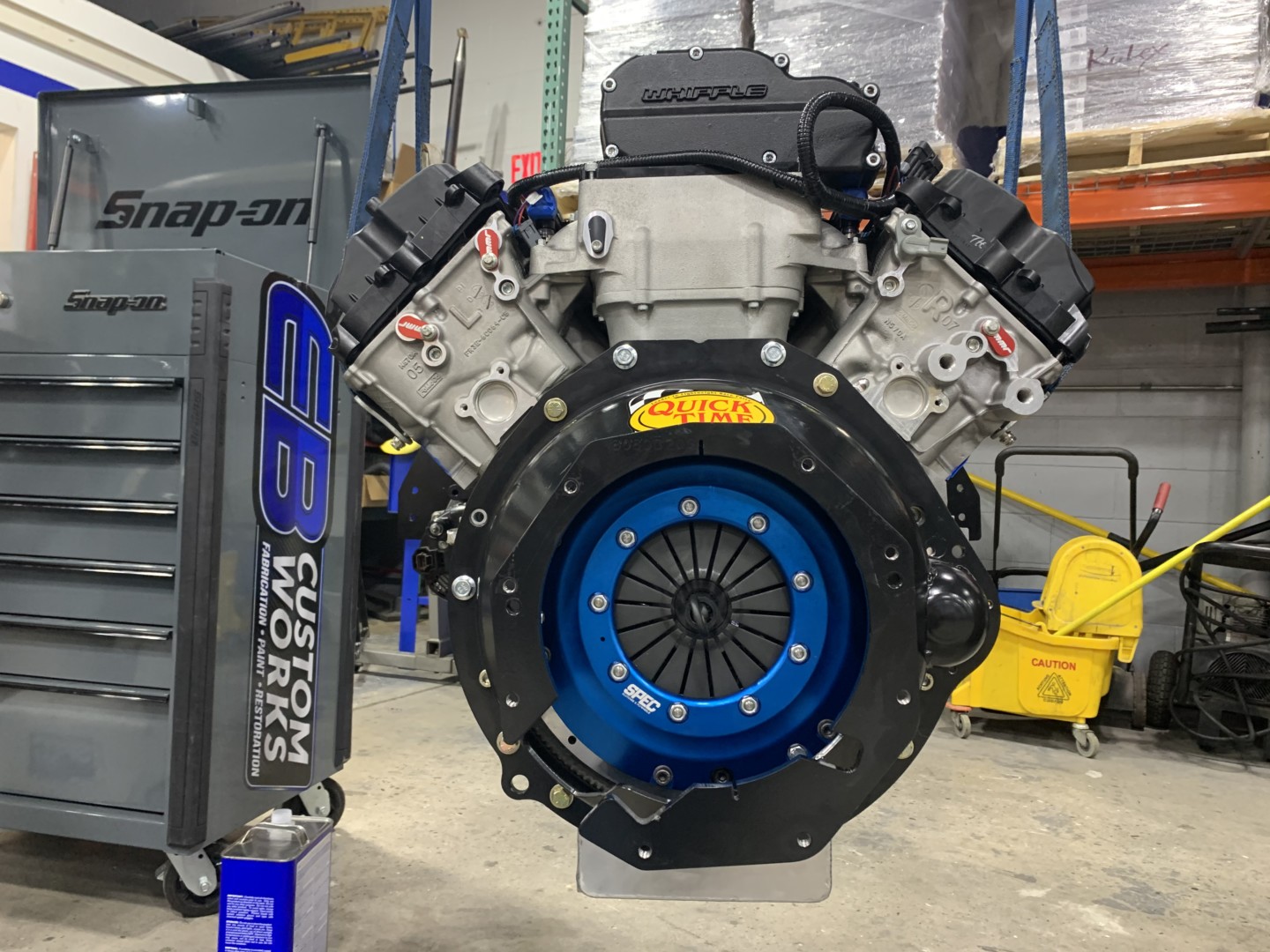
The finished product is almost too beautiful to hide by installing it in Project MoFo — but we can’t wait to experience this new SPEC clutch first-hand!
We followed the installation up by installing a Quick Time bellhousing. The TREMEC transmission will be installed once the Coyote lands itself in the ‘Cuda for ease of engine installation.
Before too long, this Ford-powered ‘Cuda should be prowling the streets, getting under the skin of Mopar owners everywhere. And with the new SPEC clutch, Bardekoff will definitely enjoy the ride.

